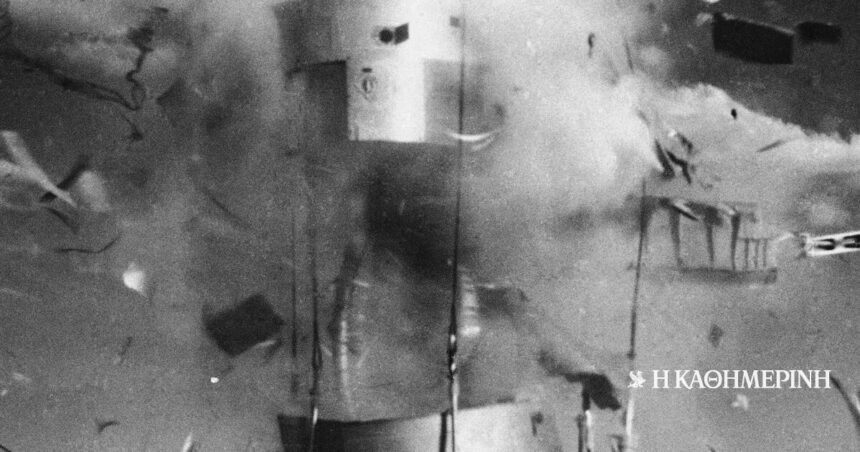When the Ronald Reagan was elected president in 1980, he was convinced that the Soviet Union she was a giant with feet of clay: militarily strong but economically weak. “The West will not contain Communism, it will transcend Communism,” he declared in May 1981, adding that he would “dismiss it as a strange chapter in human history whose last pages are now being written.” In order to hasten the end of communism, Reagan adopted a high strategy that pressured the Soviet Union in multiple ways.
The military strategy was formulated in a top-secret Pentagon “defense directive” in early 1981. The goals included encouraging “long-term political and military changes within the Soviet empire that will promote the creation of a more secure and peaceful world order.” The directive pointed to “political and economic weaknesses in the Soviet Union and the Warsaw Pact,” including a defense budget that constituted “a large, unabated, or even increasing burden on the Soviet economy.”
He proposed moves “to exploit and highlight the West’s enduring advantages in developing various systems that are difficult for the Soviets to counter, impose disproportionate costs, open new areas of major military competition, and render obsolete earlier Soviet investments or develop sophisticated deception options to achieve this goal.” In short, he proposed an arms race so intense it would bring the Soviet Union to its knees economically.
On the same wavelength, Harvard professor Richard Pipeswho served on the National Security Council in White Housedrafted a secret document in 1982 in which he suggested “the need to strengthen and sustain a process of change within the USSR itself that will reduce the Soviet threat to US and allied interests.”
Furthermore, “by identifying the promotion of evolutionary change within the Soviet Union itself as an objective of American policy, the United States they switch to the long-range attack. This approach therefore differs from the essentially reactive and defensive strategy of containment, which concedes the initiative to the Soviet Union and its allies and proxies.’

Doubling defense spending
It must be emphasized that Reagan did not expect or even consider the collapse and dissolution of the Soviet Union possible. He aimed to push her from a position of power to bring about her evolution into a less rebellious and more normal force.
Reagan increased defense spending so much that in 1985 it was nearly double what it had been in 1980. To offset Soviet conventional superiority in ground forces in Europe, the US military adopted the concept of “ground-to-air combat,” according to whereby ground forces were closely supported by aerial precision bombing capabilities, which the Soviet Air Force. The size of the American navy reached 600 ships, which were able to protect maritime commerce and defend Western interests in almost all seas and oceans. As for them Soviet SS-20 intermediate-range nuclear missileswhich had been deployed in Eastern Europe in the late 1970s, Reagan proposed the “zero option”: once the Soviets withdrew them, the US would stop developing its own countermeasures Pershing II and Cruise nuclear-powered intermediate-range missiles in Europe (the Soviets rejected the proposal in the early 1980s).

Reagan’s most ambitious step in the area of strategic armaments was the Strategic Defense Initiative (SDI: Strategic Defense Initiative) to develop a missile defense system, which he announced in 1983. SDI was contested from the start by the American scientific community, the majority of which considered—and continue to consider—complete missile coverage of the United States from a massive nuclear strike to be unachievable. Reagan’s National Security Advisor, Robert McFarlane, viewed SDI as a bargaining chip, the withdrawal of which the US would exchange for concessions by the Soviet Union regarding its own offensive nuclear arsenal. Reagan, however, was fascinated by the idea that the US could find a way out of the threat of nuclear annihilation. Having overconfidence in the US’s technological ability to overcome seemingly insurmountable obstacles, he took SDI seriously and refused to trade it even for significant Soviet concessions in the field of offensive nuclear weapons.
The SDI contributed to changing the global balance against Moscow, with its leadership since 1985 betting on the normalization of relations with the USA.
SDI continues to divide analysts today. Its supporters believe it was the critical step that forced the Soviet Union to abandon the arms race and essentially capitulate, ending the Cold War. Certainly the Soviet side was not able to compete with the USA in this new area of military technology. Its critics, however, believe that it was a waste of resources on unworkable technology and that it delayed for a few years the normalization of US-Soviet relations over Gorbachev. Certainly, however, SDI contributed to the international image of the USA as a more technologically and industrially advanced power, which was able to undertake new major initiatives in major strategic areas, where the Soviet side was unable to compete with it. In this sense, he contributed to changing the global balance against the Soviet Union, persuading its leadership from 1985 to radically change its policy and bet on the normalization of its relations with the USA.
Agreement on Mutual Reduction of Nuclear Armaments
The new Soviet leader, Mikhail Gorbachev, who assumed the reins of Soviet power in 1985, diagnosed the impasse into which his country had fallen. In his foreign policy, he bet on the normalization of Soviet relations with the USA, in order to end the arms race.
If a Gorbachev had adopted such an attitude ten years earlier, the Soviet Union might still exist today. By the late 1980s, the disintegration of the Soviet system was already well advanced. Reagan, however, realized in 1986 the change that Gorbachev was bringing. Sensing that he could end the Cold War on terms favorable to the US, he responded to Gorbachev’s overtures by effectively empowering reformers in the Soviet leadership. Reagan’s change from staunch opponent of the Soviet Union to staunch supporter of radical reconciliation deals between the two superpowers baffled many of his conservative supporters in the US, who launched scathing attacks against him.

It is a fact that Reagan’s discussion with Gorbachev in Reykjavik in 1986 about the possibility of the two superpowers completely destroying their nuclear arsenals was naive and unworkable. However, no agreement was reached at the time due to Reagan’s refusal to halt the development of SDI.
In 1987, however, Soviet scientists convinced Gorbachev that SDI could not stop a general Soviet nuclear attack, so it did not undermine mutual nuclear deterrence between the two superpowers. Therefore, the two superpowers for the first time agreed not just to limit but to drastically reduce their nuclear arsenals, starting with the agreement to destroy all of their intercontinental ballistic missiles in Europe (the Soviet side’s SS-20, Pershing II and Cruz of the US) that had disrupted their relations in the late 1970s and early 1980s.
*Mr. Charalambos Papasotiriou is a professor at Panteion University, president of the Scientific Council of the Institute of International Relations.
Diligence: Evanthis Hatzivasiliou
_______________________________________________________________________________
Main photo: 6.9.1985. The body of the Titan 1 missile is destroyed by a laser beam from afar, as part of the Star Wars program development tests, in New Mexico. [ASSOCIATED PRESS]




